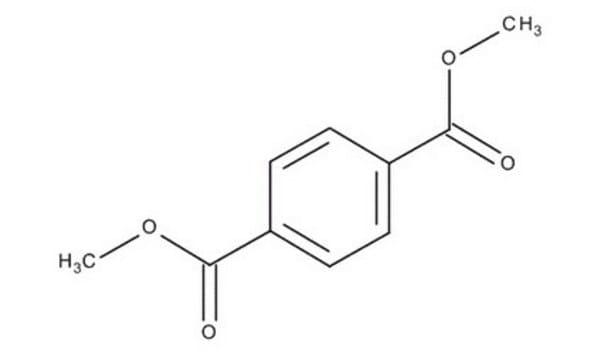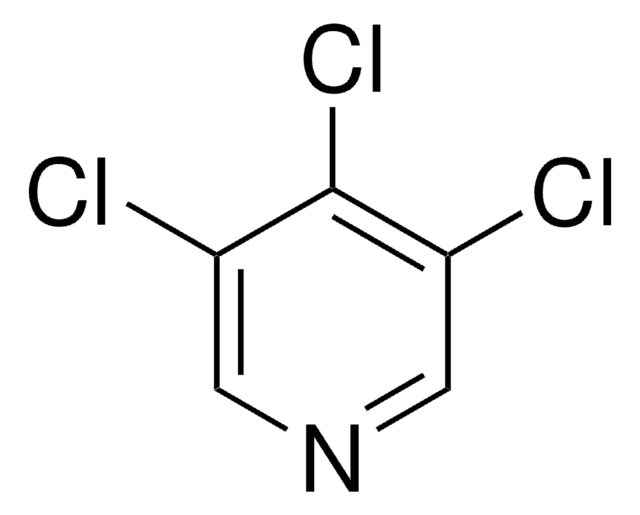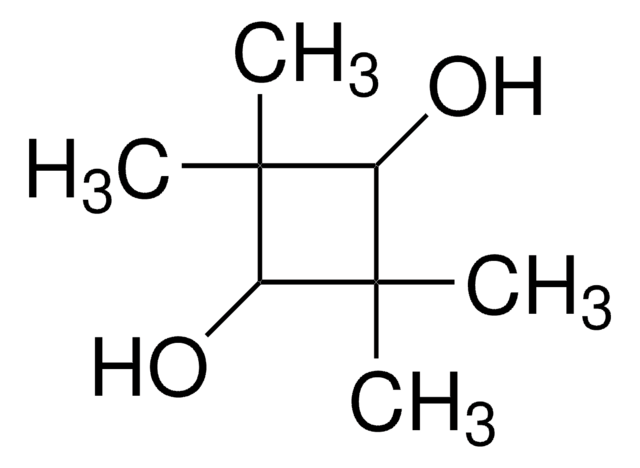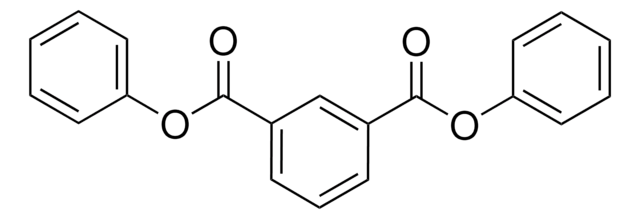185124
Dimethyl terephthalate
ReagentPlus®, ≥99%
Synonym(s):
DMT, Dimethyl 1,4-benzenedicarboxylate, Dimethyl p-benzenedicarboxylate, Dimethyl p-phthalate, Methyl 4-(carbomethoxy)benzoate
About This Item
Recommended Products
vapor density
1.04 (vs air)
vapor pressure
1.15 mmHg ( 93 °C)
product line
ReagentPlus®
Assay
≥99%
form
(Powder or Crystals or Chunk(s))
autoignition temp.
1058 °F
mp
139-141 °C (lit.)
solubility
water: slightly soluble 0.0493 g/L at 20 °C
SMILES string
COC(=O)c1ccc(cc1)C(=O)OC
InChI
1S/C10H10O4/c1-13-9(11)7-3-5-8(6-4-7)10(12)14-2/h3-6H,1-2H3
InChI key
WOZVHXUHUFLZGK-UHFFFAOYSA-N
Looking for similar products? Visit Product Comparison Guide
General description
Application
Legal Information
Storage Class Code
11 - Combustible Solids
WGK
WGK 1
Flash Point(F)
309.2 °F - (External MSDS)
Flash Point(C)
154 °C - (External MSDS)
Personal Protective Equipment
Certificates of Analysis (COA)
Search for Certificates of Analysis (COA) by entering the products Lot/Batch Number. Lot and Batch Numbers can be found on a product’s label following the words ‘Lot’ or ‘Batch’.
Already Own This Product?
Find documentation for the products that you have recently purchased in the Document Library.
Customers Also Viewed
Our team of scientists has experience in all areas of research including Life Science, Material Science, Chemical Synthesis, Chromatography, Analytical and many others.
Contact Technical Service












